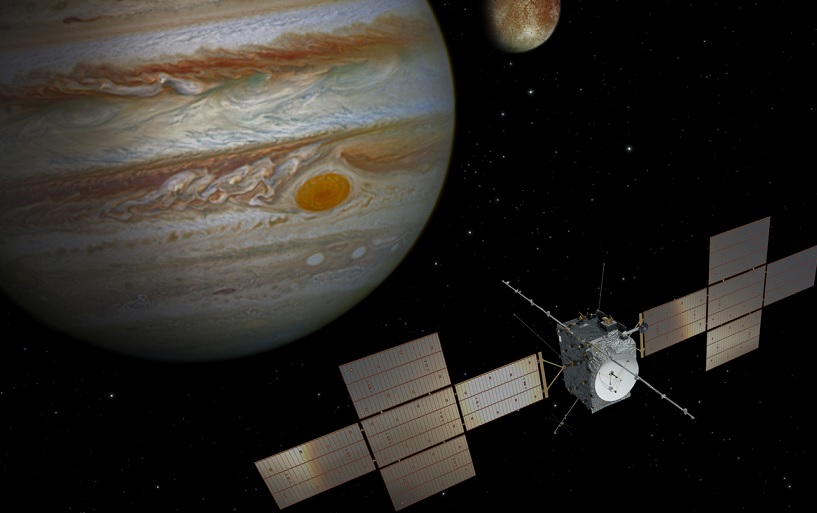ESA’s Juice lifts off on quest to discover secrets of Jupiter’s icy moons Jupiter, shining brightly in the night sky, has sparked fascination ever
ESA’s Juice lifts off on quest to discover secrets of Jupiter’s icy moons
Jupiter, shining brightly in the night sky, has sparked fascination ever since our ancient ancestors first looked up. Astronomer Galileo Galilei brought Jupiter into focus in 1610, observing the planet through a telescope for the first time and discovering its orbiting moons.
His observations overturned the long-held idea that everything in the heavens revolved around Earth. Centuries later, Juice –which carries a commemorative plaque in honour of Galileo’s discoveries– will see Jupiter and its moons in a way that Galileo couldn’t even have dreamt of.

ESA’s Jupiter Icy Moons Explorer (Juice) lifted off on an Ariane 5 rocket from Europe’s Spaceport in French Guiana at 14:14 CEST on 14 April. The successful launch marks the beginning of an ambitious voyage to uncover the secrets of the ocean worlds around giant planet Jupiter, reported ESA, the European Space Agency.
Following launch and separation from the rocket, ESA’s European Space Operations Centre (ESOC) in Darmstadt, Germany, confirmed acquisition of signal via the New Norcia ground station in Australia at 15:04 CEST. The spacecraft’s vast 27 m long solar arrays unfurled into their distinctive cross shapes at 15:33 CEST, ensuring Juice can travel to the outer Solar System. The completion of this critical operation marked the launch a success, reported ESA.

“ESA, with its international partners, is on its way to Jupiter,” says ESA Director General Josef Aschbacher. “Juice’s spectacular launch carries with it the vision and ambition of those who conceived the mission decades ago, the skill and passion of everyone who has built this incredible machine, the drive of our flight operations team, and the curiosity of the global science community. Together, we will keep pushing the boundaries of science and exploration in order to answer humankind’s biggest questions.”
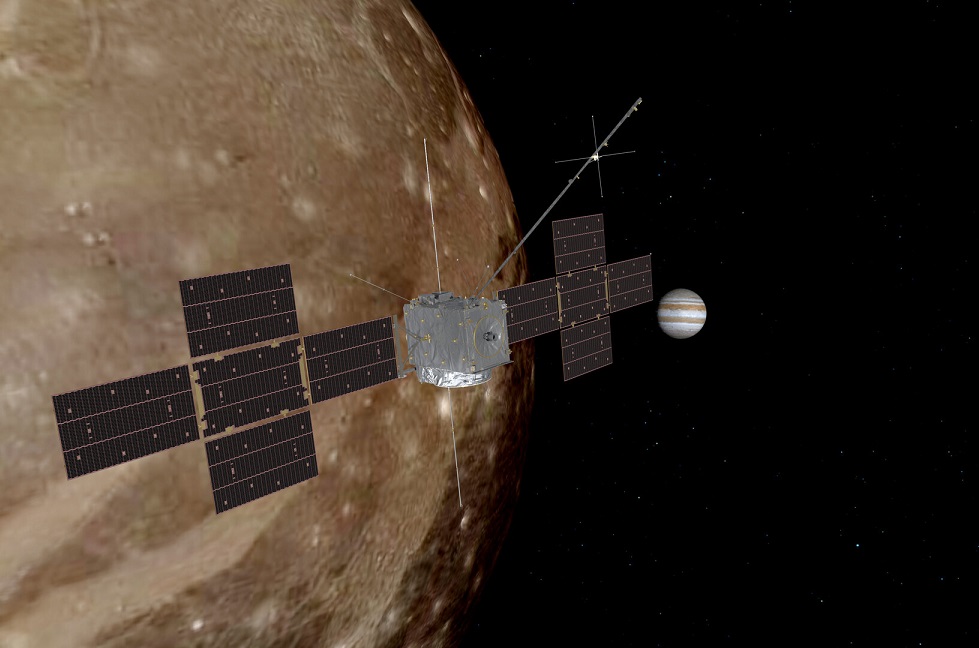
“It is thanks to the leadership of ESA and the effort and commitment of hundreds of European industries and scientific institutions that the Juice mission has become a reality,” says Giuseppe Sarri, ESA’ s Juice Project Manager. “Together with our partners NASA, the Japan Aerospace Exploration Agency and the Israel Space Agency, who have also contributed hardware or scientific instrumentation, we have reached this much-awaited launch milestone.”
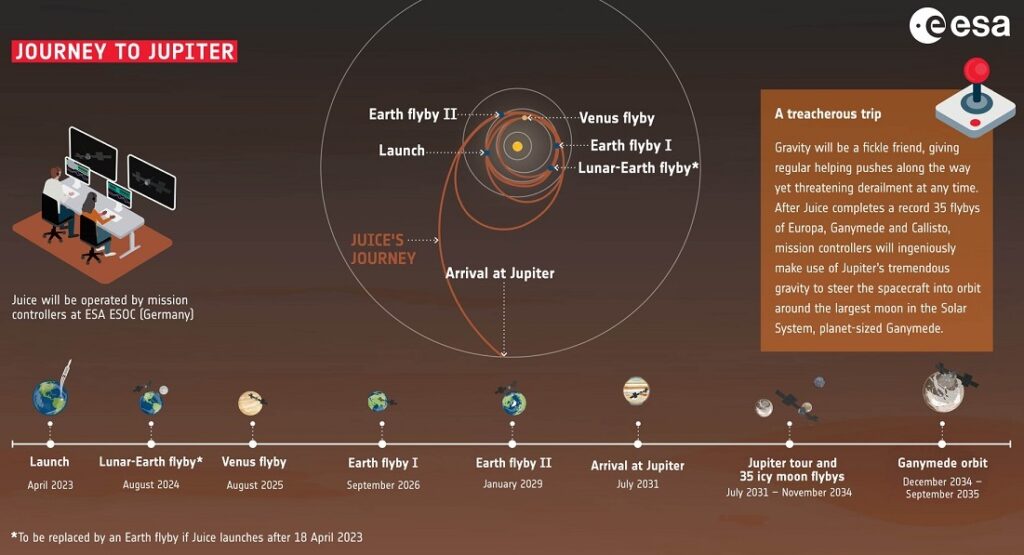
Juice is the last ESA space science mission to launch on an Ariane 5, in a long legacy dating back to 1999 with the launch of XMM-Newton, which is still in operation today, and most recently, the NASA/ESA/CSA James Webb Space Telescope in 2021.
“What a magnificent demonstration of Europe’s capacity to dream big and deliver results to match,” says Daniel Neuenschwander, ESA’s Director of Space Transportation. “We can all be proud of Ariane 5 for making possible missions like Juice and setting such a high standard for our new generation of launch systems.”
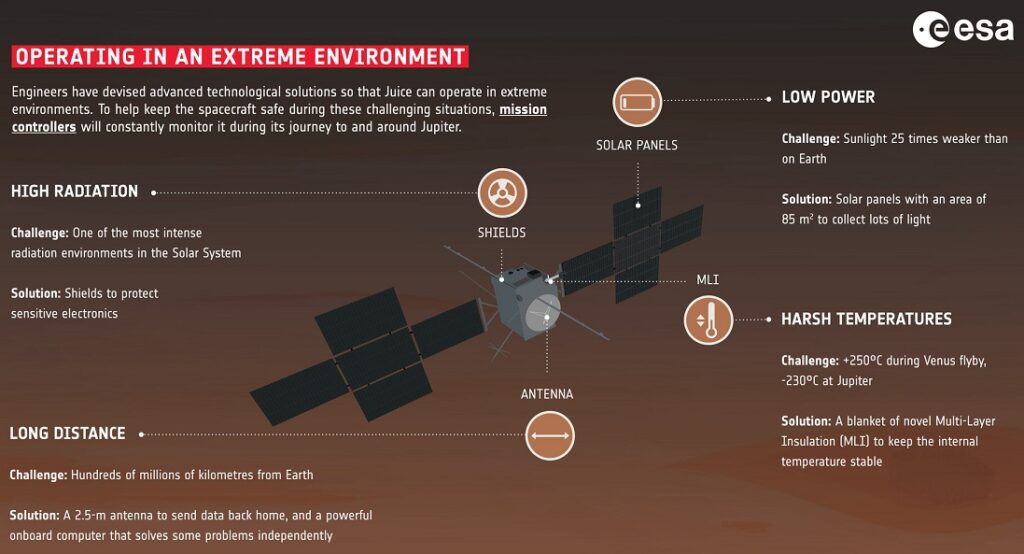
Over the next two-and-half weeks Juice will deploy its various antennas and instrument booms, including the 16 m long radar antenna, 10.6 m long magnetometer boom, and various other instruments that will study the environment of Jupiter and the subsurface of the icy moons.
An eight-year cruise with four gravity-assist flybys at Earth and Venus will slingshot the spacecraft towards the outer Solar System. The first flyby in April 2024 will mark a space exploration first: Juice will perform a lunar-Earth gravity-assist – a flyby of the Moon followed 1.5 days later by one of Earth.
“To fly such a complex path from such an enormous distance –and vitally, to get Juice’s valuable data home to Earth– will require precise navigation techniques, reliant on ESA’s deep space antennas in Spain, Argentina and Australia, all controlled remotely from ESOC.”
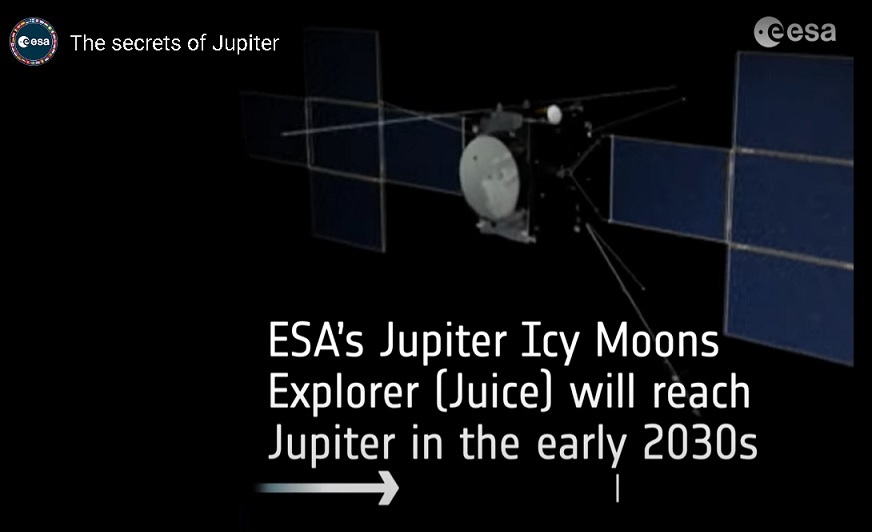
“We are ready to steer one of the most complex missions ESA has ever flown to adventures in the jovian system,” says Angela Dietz, deputy spacecraft operations manager. “From flybys of Jupiter’s moons over a period of two-and-a-half years, to the immense challenge of switching orbits from massive Jupiter to orbiting Ganymede, we’ll be solving challenges at mission control that have never been done before.”
Ganymede, which is larger than the planet Mercury, is Juice’s primary scientific target; it will spend around nine months observing the moon closely from orbit. Ganymede has a particularly intriguing characteristic in addition to its hidden ocean: it is the only moon in the Solar System to generate its own magnetic field. Only two other solid bodies generate a field like Ganymede’s – Mercury and Earth.
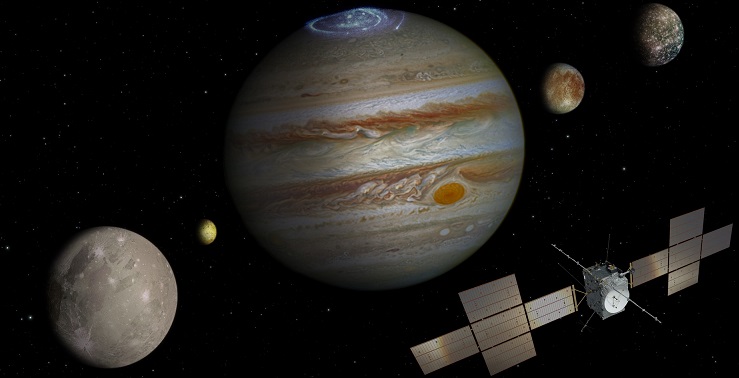
The effect is a mini ‘magnetic bubble’ sitting within Jupiter’s larger one, and the two interact in highly complex ways. Juice will reveal more about the interior structure of Ganymede and in doing so will be able to determine how its core is able to generate and maintain a magnetic field. This will be key to understanding how the moon evolved, and the consequences for habitability.
Ganymede also displays a wide range of surface ages and features, offering a geological record spanning several billion years. This complements its ‘siblings’ –ancient Callisto-, which may hold clues to early conditions in the jovian system, and young and active Europa, which vents water into space.
“The scientific treasure that will be returned will undoubtedly have far-reaching implications on how we understand our Solar System and if there are potentially habitable locations beyond Earth, not just in our own cosmic neighbourhood but also well beyond in the vast number of exoplanet systems populating our Universe,” says Olivier Witasse, ESA’s Juice project scientist. “In turn, this knowledge will make us richer beings, learning more about ourselves, our origins, and our place in the Universe.”
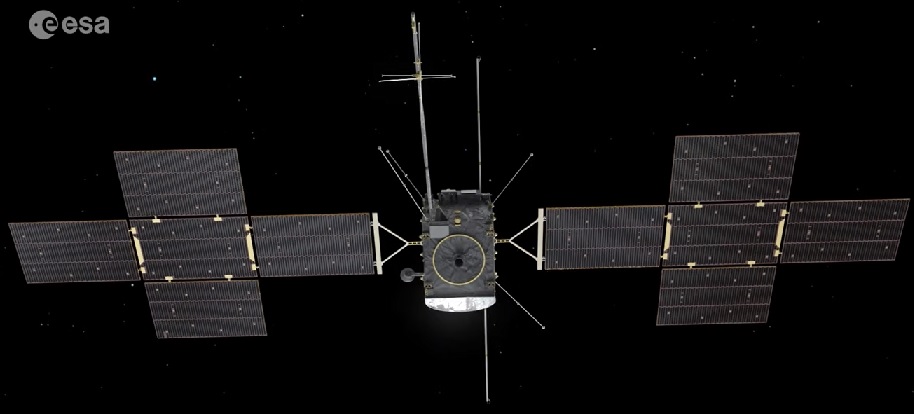
ESA’s Jupiter Icy Moons Explorer, ‘Juice’, is humankind’s next bold mission to the outer Solar System. It will make detailed observations of gas giant Jupiter and its three large ocean-bearing moons – Ganymede, Callisto and Europa. This ambitious mission will characterise these moons with a powerful suite of remote sensing, geophysical and in situ instruments to discover more about these compelling destinations as potential habitats for past or present life. Juice will monitor Jupiter’s complex magnetic, radiation and plasma environment in depth and its interplay with the moons, studying the Jupiter system as an archetype for gas giant systems across the Universe.

